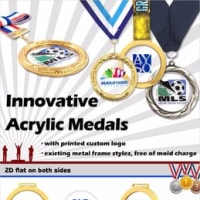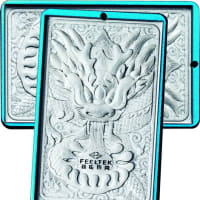Tile manufacturing, an industry with over 2000 years of history, has had a remarkably energetic past thirty years. The recent innovation boom began in the 1980s, when the invention of roller kilns sped up the process of firing tile; what once took a full day could now take mere hours. The advent of rectified tile in the 90s—thanks to a new process where tile is cut on all sides—meant produced pieces could be identical and patterns or textures could fill the entire surface of the tile.
The last two decades have been marked by the industry’s attempts to improve the decorative aspects of ceramic manufacture, as roto-color and inkjet technologies have allowed surface decoration to be applied more accurately and evenly than was possible with more traditional methods such as screen printing. The increased capabilities of tile factories have translated to more dynamic production processes and lowered costs for both ceramic tile suppliers and consumers, all the while conserving energy, water, and raw materials.
Despite the rapid progression of technology, the industry’s interest in the rich history of tile has remained firm. Spain, in particular, has upheld its tradition of family owned factories which combine advanced technologies with artisanal techniques. Metropolis spoke to Tile of Spain consultant Ryan Fasan about some enduring styles in ceramics and and how historic motifs have been adapted to suit today's technologies and needs.
Ryan Fasan (RF): During Moorish rule in Spain many buildings were built using very ornamental brickwork. Although the Moors were increasingly pushed out of the Iberian Peninsula beginning with the 12th century, some builders remained in the area and began erecting churches and public buildings in their style of architecture, but complementing it with Spanish Glazed Wall Tile, creating a hybrid style of architecture called Mudejar.
About 3 years ago an interest in brick reemerged in the tile industry. Some manufacturers are now creating a very traditional brick texture with ink-jet screening, replicating the look of ancient salvaged brick. Other manufacturers are taking handmade bricks and casting molds of them in order to make mass-produced tile that retains the shape and the irregularities of handmade ceramics.
RF: Historically, cement pavers were frequently used across Europe. Currently there is a huge boom in 2cm (5/8”) thick pavers being made in ceramics, which is twice the thickness of a normal ceramic rustic tile. The interest in ceramic pavers came on slowly, as manufacturers were unsure about shipping tile that is twice as heavy. But as soon as landscape companies started working with them they realized ceramic pavers are easier to cut, they're lighter than their traditional stone and cement counterparts, and in a lot of cases they’re the same price or even less expensive.

The last two decades have been marked by the industry’s attempts to improve the decorative aspects of ceramic manufacture, as roto-color and inkjet technologies have allowed surface decoration to be applied more accurately and evenly than was possible with more traditional methods such as screen printing. The increased capabilities of tile factories have translated to more dynamic production processes and lowered costs for both ceramic tile suppliers and consumers, all the while conserving energy, water, and raw materials.
Despite the rapid progression of technology, the industry’s interest in the rich history of tile has remained firm. Spain, in particular, has upheld its tradition of family owned factories which combine advanced technologies with artisanal techniques. Metropolis spoke to Tile of Spain consultant Ryan Fasan about some enduring styles in ceramics and and how historic motifs have been adapted to suit today's technologies and needs.
Ryan Fasan (RF): During Moorish rule in Spain many buildings were built using very ornamental brickwork. Although the Moors were increasingly pushed out of the Iberian Peninsula beginning with the 12th century, some builders remained in the area and began erecting churches and public buildings in their style of architecture, but complementing it with Spanish Glazed Wall Tile, creating a hybrid style of architecture called Mudejar.
About 3 years ago an interest in brick reemerged in the tile industry. Some manufacturers are now creating a very traditional brick texture with ink-jet screening, replicating the look of ancient salvaged brick. Other manufacturers are taking handmade bricks and casting molds of them in order to make mass-produced tile that retains the shape and the irregularities of handmade ceramics.
RF: Historically, cement pavers were frequently used across Europe. Currently there is a huge boom in 2cm (5/8”) thick pavers being made in ceramics, which is twice the thickness of a normal ceramic rustic tile. The interest in ceramic pavers came on slowly, as manufacturers were unsure about shipping tile that is twice as heavy. But as soon as landscape companies started working with them they realized ceramic pavers are easier to cut, they're lighter than their traditional stone and cement counterparts, and in a lot of cases they’re the same price or even less expensive.




















※コメント投稿者のブログIDはブログ作成者のみに通知されます